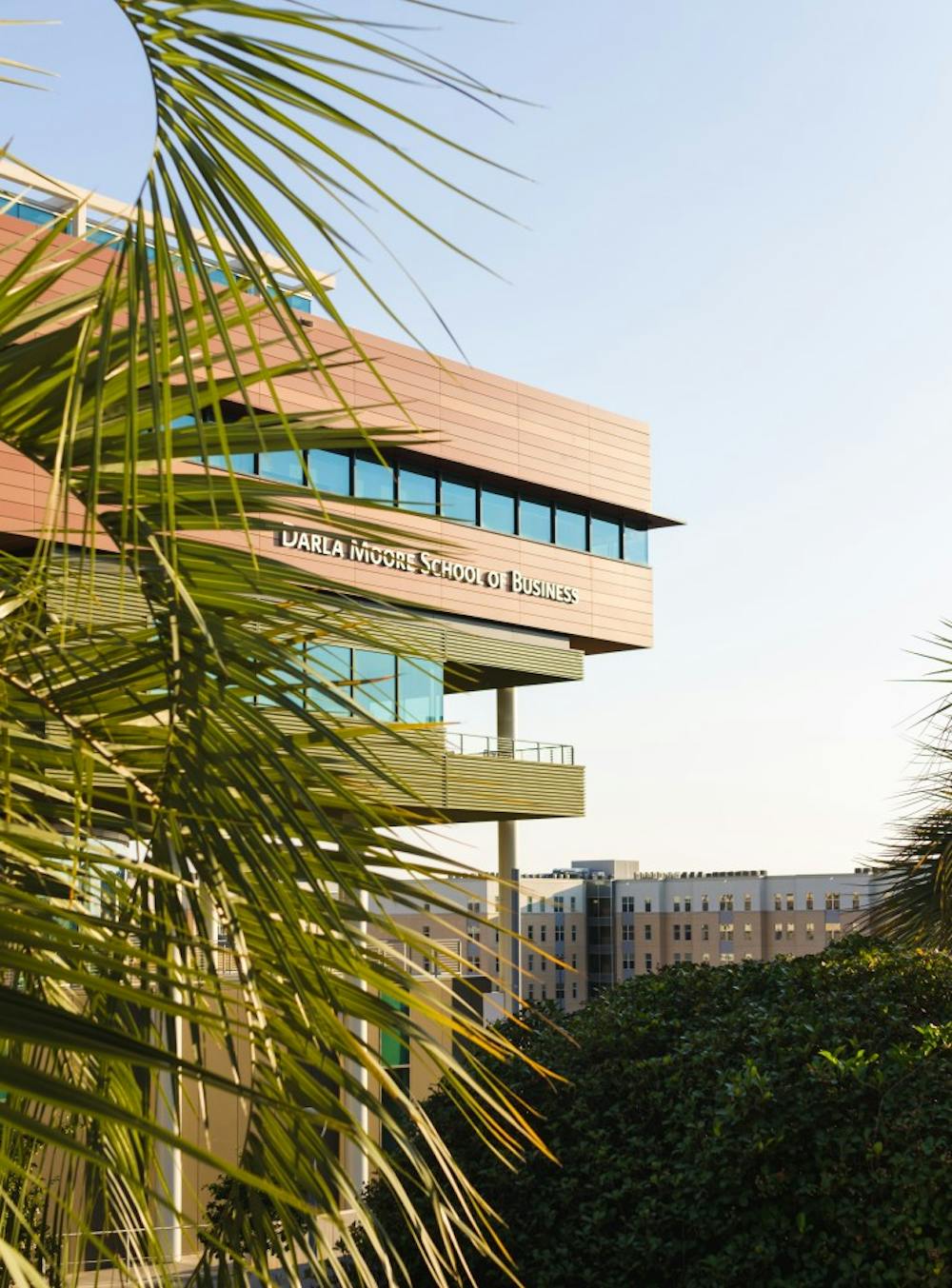To student photographer Robert Carter, buildings are dynamic. Each day, they change. Each hour they can be viewed with fresh eyes. There is beauty in buildings that most people do not see — that is, until they look at the world through Carter’s camera lens.
Carter is a third-year mechanical engineering student whose artistic inclination manifests itself in photography. Though he is assistant photo editor at Garnet and Black, taking pictures of the world around him is satisfying on a personal level: It is a creative way to escape from his math-heavy course load.
“It gives me a good break to do something that’s completely in a whole other realm of thought," he said.
And through his pictures, Carter is able to communicate with people. He is able to show them the way he sees the world, particularly the way it is constructed. Right now, Carter’s photography focuses on USC’s campus buildings.
“I want to have some kind of evidence of ‘This is what the school looked like during my time, and then this is how I experienced it, and this is how I saw it,’” Carter said.
It took Carter several years to develop his current frame of mind regarding photography. When he first started, the thought of producing highly public, popular work was appealing. But as his photography evolved, so did his outlook on the purpose of his artwork.
With Instagram as his primary content platform, Carter no longer posts solely for likes, but rather with the intent of sharing pictures he feels are actually important.
His social media tells the story of this transition, Carter himself noting that there are definite shifts in the subjects and style of his photography. He started exploring the hobby in high school, where he progressed from random photos on his iPhone to more focused ones.
But it was not until fall semester of last year when shooting the Rae Sremmurd concert for Carolina Productions that Carter began to see himself as a creator, and he became certain that photography was something he wanted to take seriously. It became priority for him to produce quality photographs.
For Carter, what makes a good photo is a combination of contrast, colors and the presence of a natural focal point. For example, if a shot includes trees, they are not the main focus but can subconsciously pull a viewer's eyes towards the thing that is.
And his intuition of what makes a “good photo” is really just that — intuition — because Carter is completely self-taught.
“I’ve not taken a single class; I’ve not read a single book,” he said of his lack of formal photography training.
Instead, he has grown from studying his past work, as well as that of other photographers.
Carter has reached a point in his photography where he is not satisfied with staying at the same level; he is consciously trying to improve himself and his work, and analyzing other people’s photos is part of that process.
“That’s kind of how I've taught myself,” Carter said. “To just study what other people do, and then to critique what I do and to not be content with what I’ve been taking, and to always be trying to push myself to make different things and to make better pictures and to step into other realms.”
These other realms include things like working for Garnet and Black, a job that challenges Carter by asking him to meet deadlines and produce photos that tell a someone else’s story. He also has set goals for himself along the way, like posting to Instagram on a regular basis, which ensured that he would make photography a priority.
“It’s been a really cool growth, turning into someone who feels really comfortable with the work they make.”
Carter now considers himself a creative individual, but he has no intention of making a career out of his photography. For now, he is considering producing a printed collection of his work.
“[Instagram] does put my work into more people's hands, but for my current goal though is to create something that I can hold in my hand that’s 100 percent all me … it’s just my pictures and my own thoughts.”
This idea of permanence was a consistent undercurrent in the way Carter spoke about photography. Buildings are more permanent than people, and this is part of the appeal of photographing architecture, according to Carter. But there is no guarantee that even the most beautiful and structurally sound buildings will stick around.
It makes sense that Carter would want to have something physical and permanent to look back on, if only for himself, family and friends. Someone who sees how dynamic the world is would want a way to preserve fleeting moments that many of us do not think about stopping to capture.

